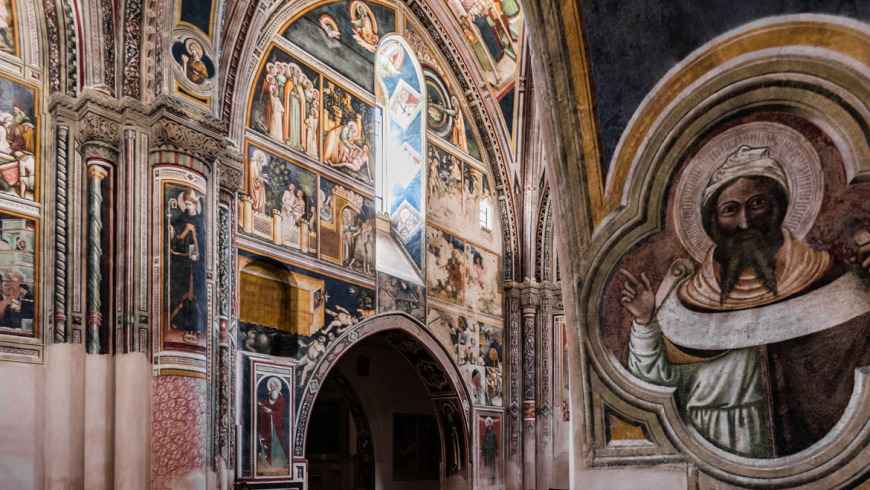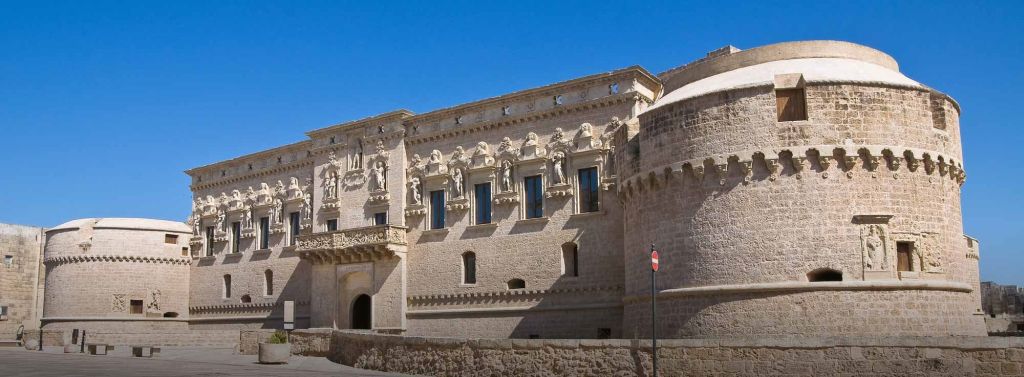 Fenix Tours
Fenix Tours




The Salento peninsula is the heel of the Italian peninsula, located in the heart of the Mediterranean divides and participates to two seas, two winds and a sun that illuminates with ineffable and immutable passion.
“Salentu, lu sule, lu mare, lu ientu" is the mantra and a sort of magic formula, which describes the Salento, in which every Salento dweller identifies him/herself and to which he/she feels to belong.
Sun, sea and wind in this land live in mystical symbiosis creating harmonies and dissonances, combining and transforming colors into landscapes, silences in sounds, smells in flavors, shadows in lights, sensations in emotions.
Something unique: an echo that flees and returns after wandering around the Mediterranean in the past, in the present, in the future therefore forever.
This narrow, intimate strip of land is nestled between the crystal clear waters of the Adriatic and Ionian seas, which embrace and portray, like lovers. And as lovers, the winds chase one other, and without rest they blow every single day in Salento.
You can't talk about Salento unless you live it at the fullest as described by words that express the real and intimate essence: sun, sea, wind.

It is the dominant architectural style in Salento. As sumptuous as original, Lecce Baroque has made this beautiful city the "Florence of the South"; the Basilica of Santa Croce (whose construction seems to be the Christian victory celebration of the Battle of Lepanto) is the most superb example of it as much as Baroque embellishes religious and civil buildings throughout the historic center of the Salentine capital from Piazza Sant'Oronzo to Piazza Duomo. Baroque, in its different versions, dominates from Gallipoli to Nardò, from Galatina to Galatone, each town, large or small, preserves precious expressions of the Salento Baroque.

The pizzica has very ancient origins that date back to the Dionysian cults very common in the Salento area, coming from Greece, and taken up by the local populations. The cult in honor of the god Dionysus was particularly felt: during the festivities the populations let themselves go publicly to unbridled behavior, aided by wine. Dionysus in Rome was identified precisely with Bacchus. Over time, Dionysus also became famous as a god of well-being and joy and was given the property of healing illnesses.
The tales from the past are a must to explain the relationship between the god and the pizzica: after the bite of the tarantula, the person fell into a state of trance from which only the music could wake him/her up; the person danced and specialized musicians played for him/her until she could undo the effect of the poison. This represented a collective moment during which they became estranged from the constraints and moral rules of the community, a sort of liberating moment in which the whole population participated.
With the advent of Christianity, the therapeutic figure of St. Paul joined the healing through dancing. The recovery from the bite of the tarantula had its ritual setting in house four walls, mostly the bedroom, with music and dance: but the church wanted to have its influence on that too, and counteracted the rituals with the chapel of San Paolo in Galatina and a miraculous water well . Comparing the documents of the past with the gestures of dances, it is noticeable that the ancient attitude of traditional home care did not end; they kept being practised in addition to the pilgrimage to the miraculous water to thank the saint. Disappeared by time both the Dionysian cult and the veneration of St. Paul, the dances continued and became patrimony of the peasant culture.
They dominate the landscape. From the red soil, where the roots sink, they rise up to the blue in evocative forms and expressions to conquer the sky, they bend back, but never break down by the invincible forces of wind and sun, while the cicadas, with incessant lament, sing always the same ode. Thus the majestic olive trees of Salento appear: generous, fearless, beautiful warriors.

Olive trees are crowded ghosts
in the wheat expanses
beyond the long rows of vines.
So much dust so much sun
and the dried soil
leads to mirages of sources
in the arid land of Salento
where the mountains are dreamt.
(Ennio Bonea)

The history of Salento begins inside its caves, the oldest houses of the first men. Lairs rich in history, indeed of prehistory, from flint tools to graffiti, from paintings to human and animal remains. The Messapians were ancient inhabitants in historical times, whose main testimonies are today kept at the "Sigismondo Castromediano" Museum in Lecce and at the "Colosso" Museum in Ugento. Brindisi with its port was extremely important during the Roman Empire but with the sixth century, the new protagonist was the port of Otranto. In the early Middle Ages, Salento was one of the few Italic lands that remained firmly in the hands of Byzantium and Otranto was more easily accessible from the east. One of the most obscure episodes of Salento history occurred in 1480 when, after a long siege, the Turks passed Otranto inhabitants who refused to convert to Islam, by the scimitar blade.

Stretching for more than 150 kilometers between the two seas that have shaped its morphology and history, Salento has a highly suggestive and enchanting coastal development. Rocky inlets smelling of myrtle and stretches of very white sand. Ancient watchtowers and Aleppo pine forests. A journey between the Ionian and Adriatic seas, discovering the Salento coasts. Between wild places and trendy beach clubs.




Land between two seas, Salento is one of the most sought after destinations, thanks to the enchanting coasts and seas, protected natural areas, ancient farms surrounded by olive groves and dry stone walls, places of undisputed artistic and cultural value and a cuisine rich in recipes and delicious typical products. From Lecce to Gallipoli, from the Adriatic coast to the Ionian coast we discover between "lu Sule, lu Mare, lu Ientu" the most beautiful beaches and not only of Salento.
Lecce, also known as the "Florence of the South" 11 kilometers from the sea, the Apulian capital is a true masterpiece of the Baroque. The noble palaces and the facades of the churches embroidered in white stone, the famous Lecce stone, are a clear example of the art of the seventeenth century.
Santa Maria de Leuca is the southernmost point of Puglia, where the waters of the two seas that bathe it cross. Otranto, located in the easternmost point of Italy is one of the most characteristic villages of Salento. Gallipoli the "Beautiful City" has beaches, nightlife and the beauty of the village that exert a charm from which it is difficult to resist.
To welcome the visitor at the gates of Galatina is the "Lamp without light". From here you enter the historic center, passing through arcades and arches and eighteenth-century palaces until you get to the heart of the city center, in front of the Basilica of Saint Catherine of Alexandria, rare example of Gothic architecture in Salento.
And finally Oria, which dominates from the top of its medieval castle the northern part of Salento and was famous in the Early Middle Ages for the presence of a thriving Jewish community.
One day would be enough to visit one or two locations just briefly described, so to you the choice of places you want to visit.
| 1-3 people | 4-7 people | ||||
| Full Price | Down Payment | Balance | Full Price | Down Payment | Balance |
| 800 € | 240 € | 560 € | 1120 € | 336 € | 784 € |

Land between two seas, Salento is one of the most sought after destinations, thanks to the enchanting coasts and seas, protected natural areas, ancient farms surrounded by olive groves and dry stone walls, places of undisputed artistic and cultural value and a cuisine rich in recipes and delicious typical products. From Lecce to Gallipoli, from the Adriatic coast to the Ionian coast we discover between "lu Sule, lu Mare, lu Ientu" the most beautiful beaches and not only of Salento.
Lecce, also known as the "Florence of the South" 11 kilometers from the sea, the Apulian capital is a true masterpiece of the Baroque. The noble palaces and the facades of the churches embroidered in white stone, the famous Lecce stone, are a clear example of the art of the seventeenth century.
Santa Maria de Leuca is the southernmost point of Puglia, where the waters of the two seas that bathe it cross. Otranto, located in the easternmost point of Italy is one of the most characteristic villages of Salento. Gallipoli the "Beautiful City" has beaches, nightlife and the beauty of the village that exert a charm from which it is difficult to resist.
To welcome the visitor at the gates of Galatina is the "Lamp without light". From here you enter the historic center, passing through arcades and arches and eighteenth-century palaces until you get to the heart of the city center, in front of the Basilica of Saint Catherine of Alexandria, rare example of Gothic architecture in Salento.
And finally Oria, which dominates from the top of its medieval castle the northern part of Salento and was famous in the Early Middle Ages for the presence of a thriving Jewish community.
The two-day excursion is not enough to visit all the places just briefly described, so the choice of the places you want to visit is up to you.
| 1-3 people | 4-7 people | ||||
| Full Price | Down Payment | Balance | Full Price | Down Payment | Balance |
| 1280 € | 384 € | 896 € | 1792 € | 538 € | 1254 € |

Land between two seas, Salento is one of the most sought after destinations, thanks to the enchanting coasts and seas, protected natural areas, ancient farms surrounded by olive groves and dry stone walls, places of undisputed artistic and cultural value and a cuisine rich in recipes and delicious typical products. From Lecce to Gallipoli, from the Adriatic coast to the Ionian coast we discover between "lu Sule, lu Mare, lu Ientu" the most beautiful beaches and not only of Salento.
Lecce, also known as the "Florence of the South" 11 kilometers from the sea, the Apulian capital is a true masterpiece of the Baroque. The noble palaces and the facades of the churches embroidered in white stone, the famous Lecce stone, are a clear example of the art of the seventeenth century.
Santa Maria de Leuca is the southernmost point of Puglia, where the waters of the two seas that bathe it cross. Otranto, located in the easternmost point of Italy is one of the most characteristic villages of Salento. Gallipoli the "Beautiful City" has beaches, nightlife and the beauty of the village that exert a charm from which it is difficult to resist.
To welcome the visitor at the gates of Galatina is the "Lamp without light". From here you enter the historic center, passing through arcades and arches and eighteenth-century palaces until you get to the heart of the city center, in front of the Basilica of Saint Catherine of Alexandria, rare example of Gothic architecture in Salento.
And finally Oria, which dominates from the top of its medieval castle the northern part of Salento and was famous in the Early Middle Ages for the presence of a thriving Jewish community.
The three-day excursion would allow you to visit all the places just briefly described in the land of the two seas.
| 1-3 people | 4-7 people | ||||
| Full Price | Down Payment | Balance | Full Price | Down Payment | Balance |
| 1680 € | 504 € | 1176 € | 2352 € | 706 € | 1646 € |